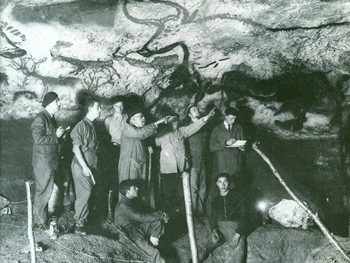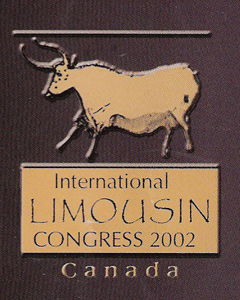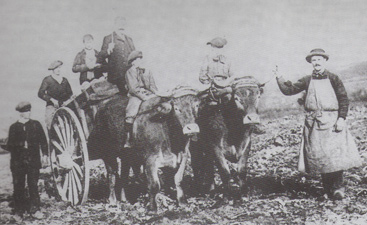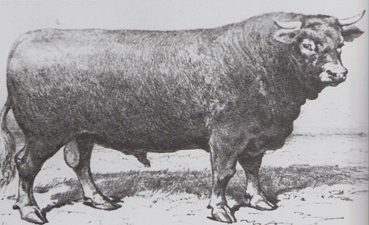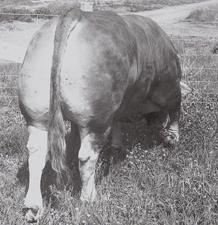
Paintings found at Lascaux Cave in 1940 about 100 miles south of Limoges dating between 17-20,000 years old, celebrated these traits by depicting cattle with long thin horns, long backs and a rather large rear.
These are all very typical features of today's animals. However, the most distinguishing feature shown in some of the paintings is the colour; that odd red hue is unmistakable.
In late 1994 two hundred miles east of Lascaux, Chauvet Cave was found. Sealed for nearly 20,000 years , the drawings within it have been carbon dated at 30-32,000 years old. These works of art are astounding, not only for their age, sheer numbers, variety of animals depicted, but the incredible skill of the artists. (The background for this site and our logo is a rendition of one of these drawings).
They illustrate the exaggerated hip, long top line, thin curved horns and even captured the attitude of these animals with the look in their eye.(To learn more on these phenomenal works see the books: Dawn of Art, The Chauvet Cave, the Oldest Known Paintings in the World, or The Cave of Lascaux, The Final Photographs).
Sliding up the time line tens of thousands of years we find these animals have been domesticated. Because of their strength and intelligence Limousin were found to be quite adaptable as draft animals. In 1698 Rene Lafarge writes, "Limousin oxen are universally renowned as both beasts of burden and beef cattle".
By the 1800's as transportation evolved, Limousins were entered into ever more distant cattle competitions, between 1857-89 they were dominating other breeds at some of the first carcass contests held near Paris. The return of meat from these was very large, 66-69% versus norms of 54-58%. Their reputation as a meat animal was secured and to this day in France they are known as the butchers animal and are marketed as such at a significant premium.
In 1886 a Limousin bull named Conquerant was selected Grand Prix d'Honneur over all French and British breeds at the International Agricultural Show in Paris. This inspired the establishment of a herd book to register and regulate the breed. Very rigid in their selections, only 614 animals out of 1800 presented from over 150 farms were accepted.
The book was redefined in 1923 and again in 1937 further refining and improving the breed. The end result has been an efficient, hardy, medium size animal well suited for it intended purpose: excellent meat.
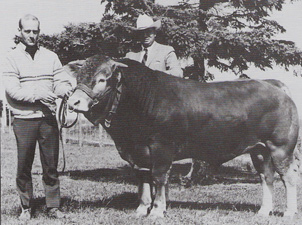
Prince Pompadour NIM 1 ( North American Import No.1) pictured here at sixteen months, just after release from quarantine in Quebec
Limousin remained confined to the plateau until the late fifties and then slowly began to gain world recognition. The first to come to Canada was a single bull in 1968 as a result of Canada finally overturning a ban on the importation of continental exotics into North America which had been in effect since 1935. (Some Charolais brought into the U.S. via Mexico in the late twenties had been blamed for a catastrophic outbreak of hoof and mouth disease).
Only breeds from Britain were deemed safe, Shorthorn, Aberdeen Angus and Herefords mostly. These breeds were quite small and prone to excess fat. The British had probably selected this trait for centuries to fulfil the needs of a large tallow industry for candles and soap. The European breeds especially the Limousin are much leaner probably due to the availability of olive oil for cooking, lighting and soap.
Limousin quickly caught the attention of the North American beef industry because of its leanness, much larger yield and higher percentage of expensive cuts along the loin. Today, Limousin cattle are sought after nation wide by companies like LaurasLeanBeef.com, a Kentucky based brand which pays a premium to producers for this leaner, gourmet beef




